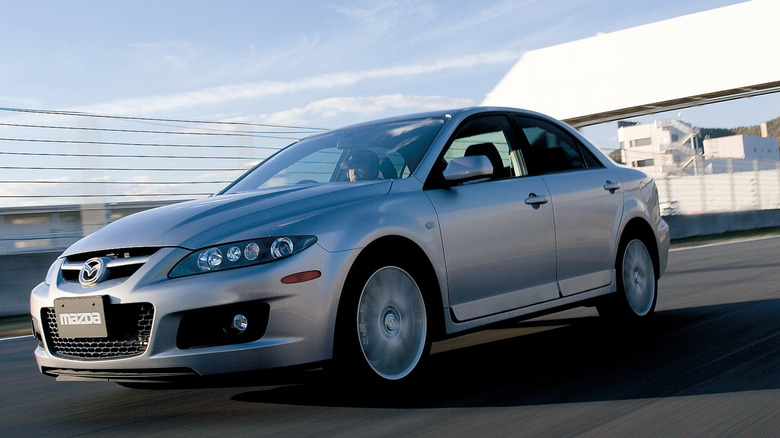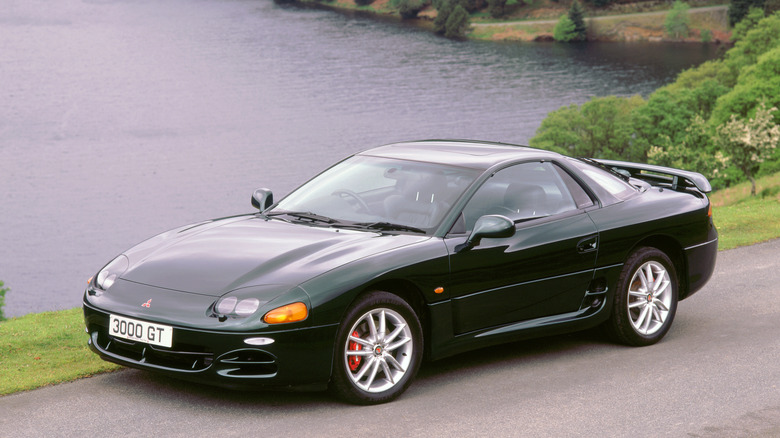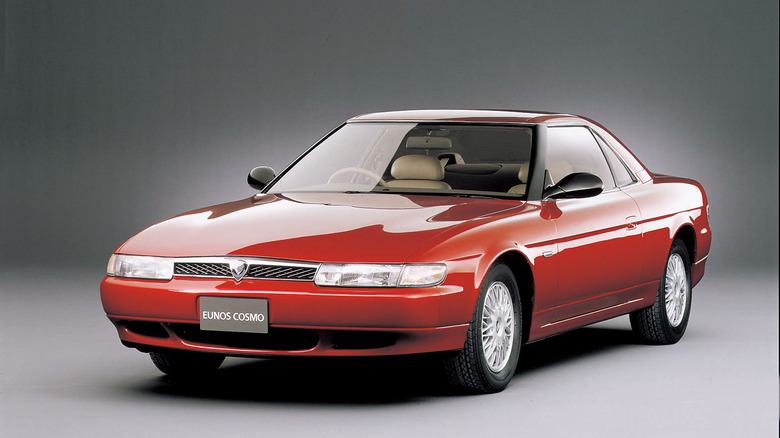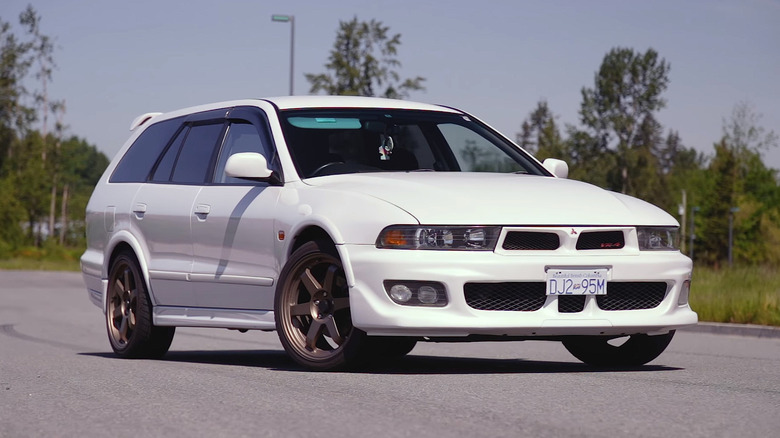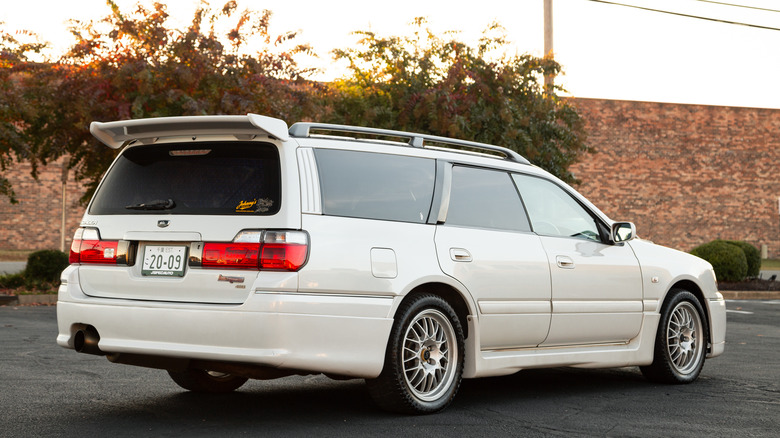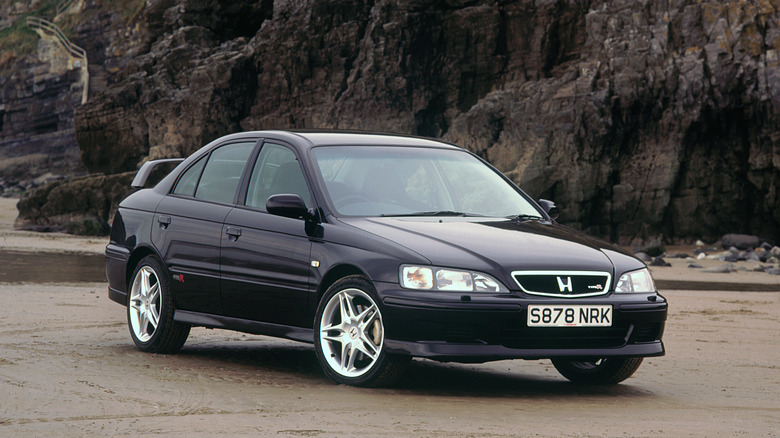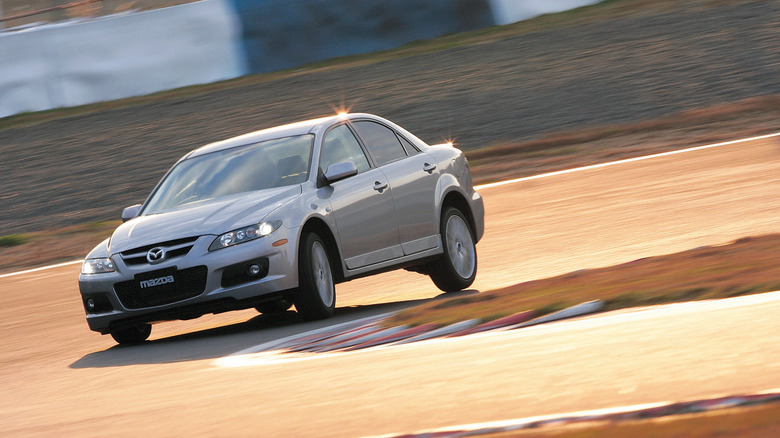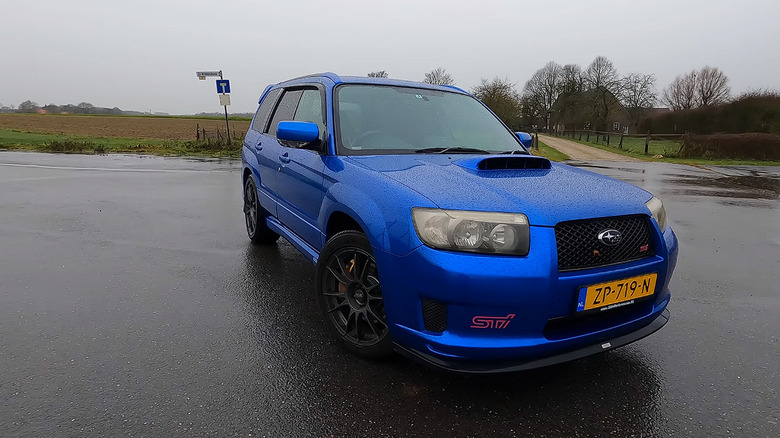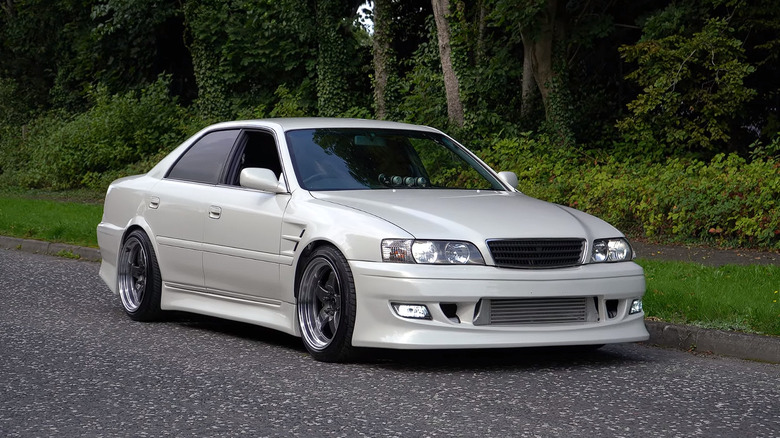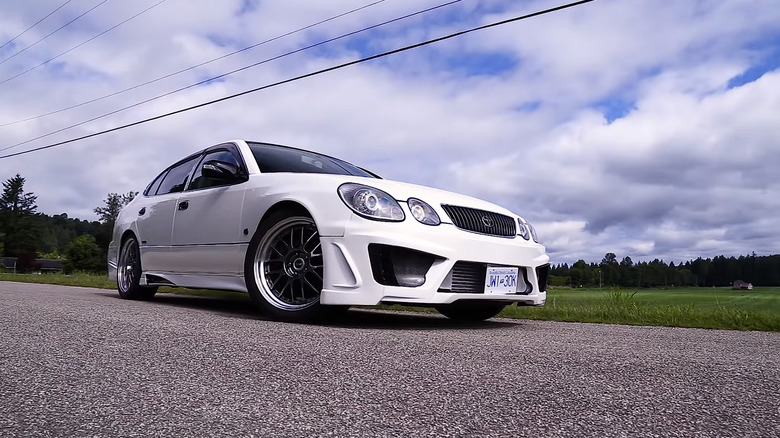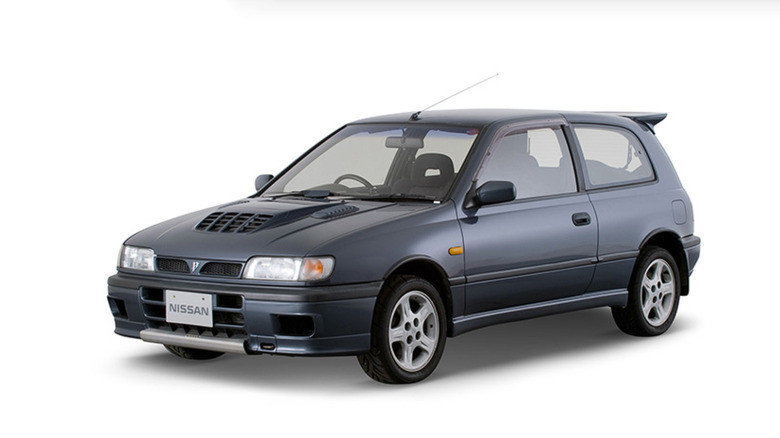10 Affordable JDM Cars With Surprisingly Powerful Engines
Affordable and powerful JDM classics are becoming extinct. Thinking about snatching something interesting that's flown under the radar? Odds are, some YouTubers recommended it on their channel, and the price has already spiked, or it's about to. Then there's the looming inevitability of electrification on the horizon, which has urged enthusiasts toward analog JDM machines. Basically, if you want to find something good in today's used car market, it's best to act quickly. We can help you with that.
This article will put the spotlight on some surprisingly powerful Japanese cars, mainly produced during Japan's bubble economy era, which escaped the recent price hikes. Although these cars slipped by many enthusiasts, they still have that special JDM sauce we all love. They are not cheap, mind you, but compared to Supras and Skyline GT-Rs reaching six figures, they're relatively affordable.
Oh, and to make this list useful for more people, we included various types of powerful vehicles. These include two fast wagons to transport your family in style, a Supra-beating coupe, an Aston Martin-rivaling grand tourer, quite a few fast sedans, and even a hot crossover. Sounds interesting? Let's get cracking!
Mitsubishi 3000GT VR4
Are you dreaming of owning one of Japan's high-performance sports cars from the 1990s like the Supra, Skyline GT-R, Honda NSX, and Mazda RX7? Unfortunately, they are more expensive today than when they were new and prices are only going up. However, one JDM grand tourer escaped attention — the Mitsubishi 3000GT VR-4. This car is the real deal — it not only looks, but it's also quicker than its rivals. And while not cheap — good examples go for $20,000 to $30,000 — it's much more affordable than what we've come to otherwise expect. Alternatively, you can also look for the mechanically identical Dodge Stealth, which was a failure at the time but a solid buy today.
Looking just at the numbers, the 3000GT VR-4 is mightily impressive. It packs a 3.0-liter twin-turbocharged V6, producing 320 hp @6,000 rpm and 315 lb-ft of torque at relatively low @2,500 rpm. Interestingly, the 3000GT VR-4 is an all-wheel-drive machine with a transversely-mounted engine and a six-speed manual gearbox. Thanks to the added traction from the AWD system, it reaches 60 mph in just 4.8 seconds. That's 0.3 seconds quicker than a stock Toyota Supra MKIV Turbo!
The 3000GT VR-4 doesn't corner as well because of the added weight of the AWD system — it tips the scales at 3,803 pounds. However, it's more usable in foul weather, particularly in the hands of inexperienced drivers. The only real downside of owning the 3000GT VR-4 is that the aftermarket support is subpar. Still, that shouldn't be a big issue if you like your cars near-stock.
Mazda Eunos Cosmo
The RX-7 is easily one of Mazda's most celebrated cars. It's one of the most popular JDM classics, period, but it's not the most prestigious — that title goes to the Eunos Cosmo. This grand-tourer isn't often mentioned in the same sentence as its cousin, as it was designed to compete against the likes of Jaguar and Aston Martin.
The Eunos Cosmo was Mazda at peak engineering and technology. Under the bonnet, the top-end trim featured Mazda's iconic rotary engine with two turbochargers. Although the rotary triple had a 2.0-liter capacity, it produced 280 hp. However, every JDM performance vehicle of the era was that powerful because of the gentlemen's agreement — the real number is closer to 320 hp. Even so, the Eunos Cosmo took 6.2 seconds to reach 60 mph, mainly due to the slow four-speed automatic. Mazda imagined the Cosmo as a luxury GT, not a sports car, so you won't find one with a manual.
Still, the company did many other things right. There was a futuristic wrap-around dashboard with a color touchscreen in the middle that could even be covered for a more streamlined look. Moreover, it featured Mazda's Car Control System with the first-ever GPS navigation in a production vehicle. Heck, you could even use it as a video screen for your Playstation!
Unsurprisingly, the Eunos Cosmo was expensive, costing $43,650 for the top-end model with all bells and whistles. Adjusted for inflation, that's more than $90,000 today! Fortunately, second-hand models are way more affordable, with prices ranging between $13,000 to $25,000.
Mitsubishi Galant/Legnum VR-4
When it comes to legendary Mitsubishi sports cars, the Lancer Evolution reigns supreme. Featuring advanced AWD systems developed in the World Rally Championship and very potent turbocharged engines, each "Evolution" of Mitsubishi's compact car is as attractive as a JDM classic could be. The Japanese company used the same mechanical parts in its larger Galant model, which is undeservedly overlooked today.
In fact, Mitsubishi started its rally journey with the 1987 Galant VR-4 before replacing it with the Lancer Evolution. As customary, the manufacturer offered a rally homologation special for regular buyers, packing 205 hp and 217 lb-ft of torque from the famous 2.0-liter 4G63 engine. It reached 60 mph in 7 seconds and had a Viscous Realtime 4WD (VR-4) with 50:50 torque distribution and a viscous coupling lock in the rear. On top of that, it also had a four-wheel-steering system, which steered the rear wheels above 31 mph (50 km/h) to improve agility and stability.
However, the real gem came with the VR-4 Type S version in the eighth-gen Galant, which packed a 2.5-liter twin-turbo V6 and a five-speed manual or five-speed semi-automatic, producing 276 hp and 268 lb-ft of torque. It is a technological tour-de-force featuring a computer-controlled active yaw control to increase grip, yet you can snatch one today for around $15,000. Our pick of the bunch, though, is the Legnum VR-4 Type S wagon version, which looks like a sleeper JDM Audi RS4 Avant.
Nissan Stagea Autech 260RS
Continuing with the sleeper wagon thing, we present you the Nissan Stagea Autech 260RS. Nissan didn't actually build this boxy less-known JDM wagon — it was the company's tuning arm, Autech — but you may have heard of its engine: Nissan's legendary RB26DETT. Yes, despite looking so sedate, this is powered by the same 2.6-liter twin-turbo inline-6 monster as the Skyline GT-R, producing 276 hp and 271 lb-ft of torque.
Much like its famed cousin, the Stagea Autech 260RS has a special ATTESA E-TS 4WD system with a limited-slip differential and Super-HICAS four-wheel steering, aiding with traction and drivability. Furthermore, it came exclusively with a five-speed manual and hydraulic steering, so it's much more analog than the modern family wagons we have today.
According to official figures, the Stagea Autech 260RS hits 60 mph in 5.7 seconds — nothing to brag about, sure, but still pretty fast for a wagon weighing 3,792 pounds. That weight also made the Stagea Autech 260RS more practical. Measuring roughly 16 feet long, it has all the space you need to move your family around in comfort. Considering the special RB26DETT sauce it has under the bonnet and prices of JDM classics in general, it's not hugely expensive, ranging around $35,000. Still, if you want to save some cash, you could go for the RWD 25RS version, which has a 2.5-liter six-cylinder producing solid 200 hp.
[ Featured Image by Guyon Cumby via Wikimedia Commons | Cropped and scaled | CC BY-SA 4.0 ]
Honda Accord Type R/Euro-R
Type R signifies the "crème de la crème" performance offering in Honda's and Acura's lineup. Throughout the company's history, it adorned various nameplates, like the Civic, Integra, and NSX. However, few enthusiasts know that Honda also used it for the larger and more practical Accord, which had a high-performance variant from 1998 to 2008, spanning two generations. The second generation was actually called the Euro-R and was a JDM-only model, while the Type R was available in Europe as well.
The first-gen model, in true Honda fashion, packed a naturally-aspirated 2.2-liter engine — the same one used in the S2000, albeit packaged differently to work with the front-wheel-drive layout. In Europe, it produced 209 hp @7,200 rpm and 158 lb-ft @6,700 rpm and was paired with a 5-speed manual.
Those numbers don't sound very exciting, sure, but the Accord Type R only weighs 2,877 pounds — pretty lightweight for a four-door family sedan. As a result, it reaches 62 mph in 7.2 seconds and has a top speed of 142 mph. Crucially, the Accord Type R was equipped with a Helical LSD, sporty suspension, and stiffer bushes, which made it much better in the corners than its peers. It's fairly affordable today, too — in Europe, it costs from $10,000 to $15,000!
Meanwhile, the second "Euro-R" model destined for the Japanese market had a smaller, 2.0-liter engine. It was lower on torque, but it produced its peak 220 hp at a stratospheric 8,000 rpm! Paired with a six-speed manual, the Accord Euro-R must be a hoot to drive.
Mazda Mazdaspeed 6
Want an affordable Japanese performance sedan without the hassle of importing it? Put the Mazdaspeed 6 on your shortlist. It's available in the U.S. at bargain basement prices, ranging around $10,000, and packs quite a punch. Under its sleek front bonnet, Mazda's sports sedan packs a 2.3-liter turbocharged inline-4, producing excellent 274 hp and 280 lb-ft of torque. It's not very heavy, too, considering the AWD system onboard — the Mazdaspeed 6 weighs around 3,500 pounds.
It all sounds like a recipe for a Japanese rally homologation special, but you'd be wrong to look at the Mazdaspeed 6 that way. Based on the first-gen Mazda 6, this sporty sedan is a larger vehicle than the Subaru Impreza WRX STI and Mitsubishi Lancer Evolution, so naturally, it has more space inside. It also doesn't perform as well as those cars, hitting 60 mph in 6.2 seconds. However, don't let that fool you into thinking the Mazdaspeed 6 is not a good driver's car — it's enough to earn it a place among the fastest Mazda sports cars ever made!
The Active Torque Split All-Wheel Drive allows for exceptional handling balance and strong traction on corner exits, even when road conditions aren't perfect, while the stiffened suspension takes care of body roll. An Aisin-sourced 6-speed manual shifts swiftly through the gears. Basically, you get both the analog driving experience from the manual and a tech-laden AWD system to keep you safe.
Subaru Forester STI / Forester XT
Crossovers are all the rage today, particularly among parents. However, few, if any cheap family crossovers today offer driving fun — most are quite the opposite, in fact. It wasn't always like that. Subaru, of all brands, made a WRX STI version of its compact family crossover/SUV, the Forester. This boxy-looking crossover is perfect for speed-loving parents, as it packs a 2.5-liter turbocharged flat-four producing 260 hp, paired with a six-speed manual transmission and Subaru's rally-inspired symmetrical AWD system.
The Forester STI is a JDM-only model, though, and since it was first introduced in 2004, you still can't import it stateside. But ranging between $10,000 to $12,000, the Forester STI is affordable, so it could be an interesting buy once available, especially for Impreza WRX STI fans who also happen to have a family.
Fortunately, Subaru offered a sporty version of the second-gen Forester (2002 to 2008) in the U.S. called the XT. Packing a similar 2.5-liter flat-four turbo, producing 230 hp and 235 lb-ft of torque, the Forester XT is certainly no slouch, reaching 60 mph in just 5.9 seconds. It's also equipped with a five-speed manual, so it's engaging to drive too. Let's not forget Subaru's symmetrical AWD system, which takes care of stability and grip. It's currently fairly affordable, though prices could go up in the future.
Toyota Chaser Tourer V
The Chaser Tourer V JZX100 is an interesting JDM sports sedan that arrived fresh from the "25-year import ban" oven a few years ago. It's still relatively affordable when compared to other Japanese icons from the era, especially considering the fact that it packs the 1JZ-GTE engine, which has become almost as famous as its bigger brother, the 2JZ-GTE. Prices range around $20,000 in 2024, which is not much for a JDM icon.
This 2.5-liter turbocharged inline-6 unit has 276 hp and 278 lb-ft of torque from the factory, but if you know anything about JZ engines, you are probably aware that they are capable of much more. Toyota also offered the Chaser Tourer V with a naturally aspirated 2JZ-GE engine — the same unit from the base Supra MKIV — producing a solid 217 hp and 216 lb-ft of torque. Still, the 3.0-liter unit is only paired with a four-speed manual, which is not particularly exciting.
But don't go and buy a Chaser Tourer V just because of the engines — this sleek sedan has other attractions. For instance, it's an RWD sports sedan with a five-speed manual (in the 1JZ-GTE version) and exceptional handling balance. Thanks to that, it's a very popular drift vehicle in Australia and New Zealand, and it will soon take its place in the drifting culture in America, too. It doesn't hurt that it's also very reliable, even when tuned, mainly thanks to those bulletproof engines.
Toyota Aristo V300
The Chaser Tourer V is pretty much perfect, but hardcore Toyota enthusiasts are rarely in anything without the 2JZ-GTE name in it. Enter the Aristo V300 JZ161 — a JDM-only version of the second-gen Lexus GS. Unlike its Lexus counterpart, though, the Aristo V300 was equipped with the Toyota Supra MKIV's 2JZ-GTE engine.
The mythical 3.0-liter twin-turbo inline-6 unit produces 276 hp and 332 lb-ft of torque in the Aristo V300. It's worth noting that Toyota underreported the power output due to the gentlemen's agreement, where manufacturers were obliged to launch cars with no more than 276 hp. Unfortunately, the Aristo V300 only came with a four-speed automatic, but at least it's rear-wheel drive.
Still, the 2JZ-GTE is one of the most reliable engines in history and tough enough for some crazy high-horsepower builds. Also, since the aftermarket support for this generation of Toyota sports cars is incredible, you can even make a manual swap and take care of the shifting yourself.
Prices for the 2JZ-GTE-equipped model range between $12,000 and $25,000. That's not exactly affordable, but you are getting a stable-value engine and a car that will probably become even more expensive in the future. In that sense, it's a fairly affordable yet powerful JDM machine.
Nissan Pulsar GTI-R
What would happen if you shrunk the Skyline GT-R down into a hot hatch? Well, there is no need to imagine anything. Nissan's engineers conceptualized such a vehicle in the 1980s. This crazy rally-homologation hot hatch with world-beating performance and features launched in 1990, yet the car is suspiciously affordable today, with prices ranging around $15,000. It's called the Pulsar GTI-R, and it's one of the best rally homologation specials ever.
To begin with, the Pulsar GTI-R packs Nissan's famous SR20-DET under the bonnet, one of Nissan's best-ever engines. This iteration's 2.0-liter turbocharged inline-4 produces 230 hp and 210 lb-ft of torque. That may not sound like much today, but in 1990, this was the hottest of the hot hatches.
Besides, the Pulsar GTI-R weighs only 2,690 pounds, especially impressive given that this pocket rocket has a 4WD system. Not only that but it's controlled by the same Advanced Total Traction Engineering System for All-Terrain (ATTESA) system as the Skyline GT-R for maximum grip in the corners. It also allows for a 0-62 mph time of just 5.4 seconds, an impressive feat for a 1990s subcompact car.
Interestingly, Nissan also made a left-hand-drive version of this car for the European market. There, it sold as the Sunny GTI-R and came with a slightly detuned 217-hp engine. It's not a big loss, especially if you have trouble shifting with your left hand, as a five-speed manual was the only transmission on offer.
